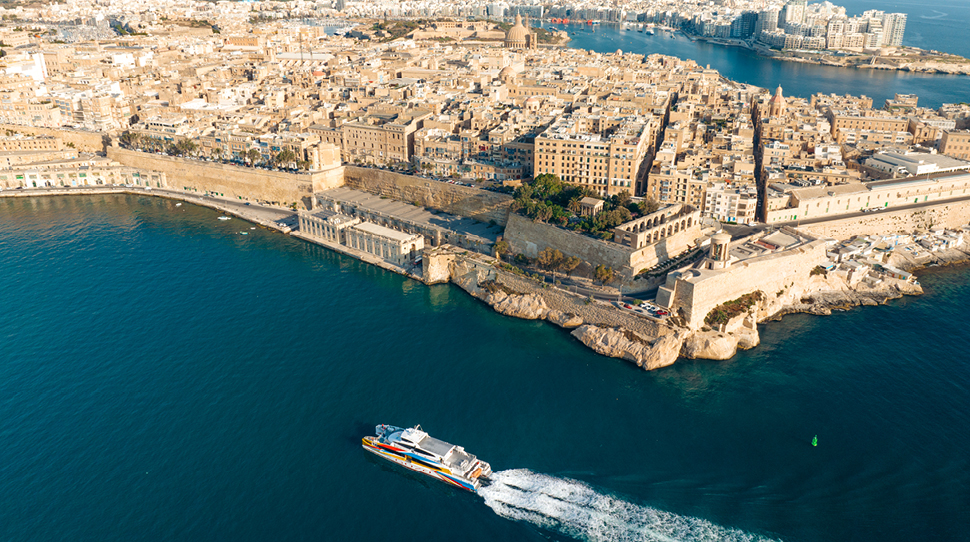

Malta may be tiny, with an estimated 435,000 residents across just 122 square miles, but the Mediterranean island nation punches above its weight when it comes to history, architecture, natural scenery and gastronomy.
Between Northern Africa and Sicily, Malta provides a wide array of experiences: visit ancient fortified cities, dine on Maltese tapas by the Grand Harbour, explore an ancient palazzo, taste native wine varieties or head underwater for excellent snorkeling and scuba diving.
Follow our culture-packed itinerary for an unforgettable few days in one of Europe’s most vibrant destinations.
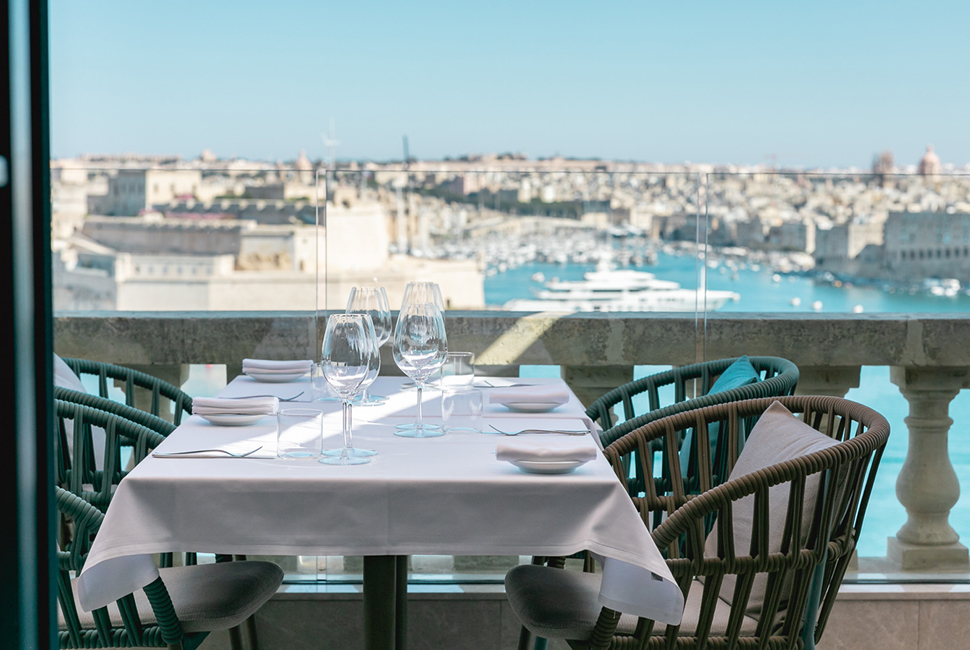
Day 1: Valletta
First things first: Drop your bags and get your bearings. If you’re looking for a gorgeous place to rest your head in Valletta, Malta’s UNESCO-listed capital city, stay at Iniala Harbour House. Set in historic houses overlooking the Grand Harbour, this Forbes Travel Guide Five-Star hotel combines bold art and modern design with 17th-century surroundings.
Once you’ve settled in, start the adventure with a local breakfast of Maltese pastizzi (savory pastries) or sausage crescents at Caffe Cordina, a Valletta institution since 1837. After you recharge, walk west along Republic Street, the city’s main commercial artery, to see Valletta’s grand entrance. Here, stop to admire the bronze Triton Fountain just outside the imposing City Gate. In 2014, internationally acclaimed Italian architect Renzo Piano renovated the City Gate in a more modern style.
Heading east, find the Upper Barrakka Gardens and soak up the romantic atmosphere. Home to gorgeous fountains, statues and terraced arches, the gardens promise excellent views of the Grand Harbour and the “Three Cities” of Malta — Vittoriosa (also known as Birgu), Senglea (Isla) and Caspiscua (Bormla) — across the water.
Just below, the Saluting Battery reminds you of Malta’s history as a British air and naval base in World War II. While the effort managed to disrupt supply routes to North Africa, Malta suffered severe bombing by German and Italian forces — to the tune of 154 days and nights and 6,700 tons of bombs — and it took several decades to rebuild after the war.
Venturing east on Republic Street, walk until you reach St John’s Co-Cathedral, considered one of the continent’s finest examples of baroque architecture. A feast for the eyes, intricate gold details and frescoes cover the opulent interior from floor to ceiling. While there, don’t miss a chance to view one of Caravaggio’s most important oil paintings, Beheading of St John the Baptist, dating to 1608.
From there, a 10-minute walk east will take you to the end of the peninsula, where the mighty Fort St. Elmo (which played a starring role in the Great Siege of 1565) will wow you with impressive architecture and a comprehensive National War Museum full of military armor, artifacts, medals, weapons and vehicles.
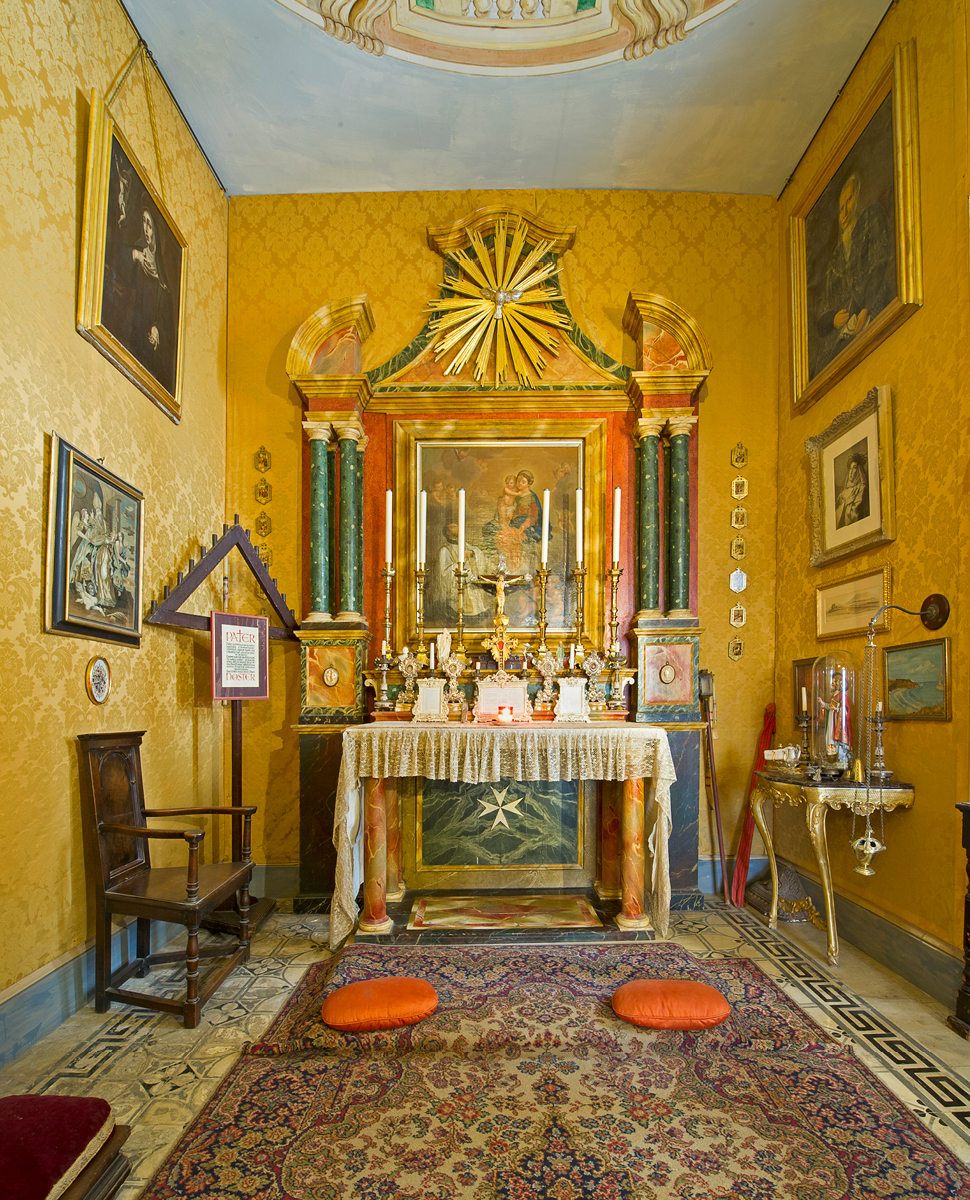
Stop for lunch at Palazzo Preca for delicious Maltese cuisine and local wines served inside a 16th-century palazzo, then continue to Casa Rocca Piccola. This grand 50-room palace belongs to the noble de Piro family. Inside the private museum, you can take a private tour — often given by Marquis and Marchioness de Piro — to peek into beautifully appointed rooms, learn about Maltese traditions and gaze at the well-preserved artwork and furniture.
Next, wander through the city’s cobbled streets to soak up Valletta’s diverse architecture, influenced by Malta’s many rulers over the past 8,000 years. Its rich heritage sets the country apart, says Andrea Oschetti, founder of luxury travel experts Blueflower Travel.
“This tiny island nation witnessed the rise and fall of empires: Phoenicians, Romans, Arabs, Normans — they all recognized its strategic significance [in terms of trade routes and naval power],” Oschetti says.
“And let us not forget the valiant Knights Hospitaller, a revered religious military order that waged maritime warfare against the Ottoman forces and the pirates that plagued the Mediterranean. Their battles became legendary, their defense of Christian interests etched into the very fabric of Malta’s history.”
To learn more about the Knights Hospitaller, finish the day with a visit to the Grandmaster’s Palace and armories, which was initially built for the order’s Grandmaster of Malta in the 1500s and now acts as the seat of the country’s president. A few areas within the grounds are open to the public, including the armory, staterooms and scenic courtyards.
For dinner, you can’t go wrong with charming Paul’s Bistro, where you can enjoy fresh Maltese ingredients, Mediterranean dishes and an excellent wine selection inside a converted 16th-century well.
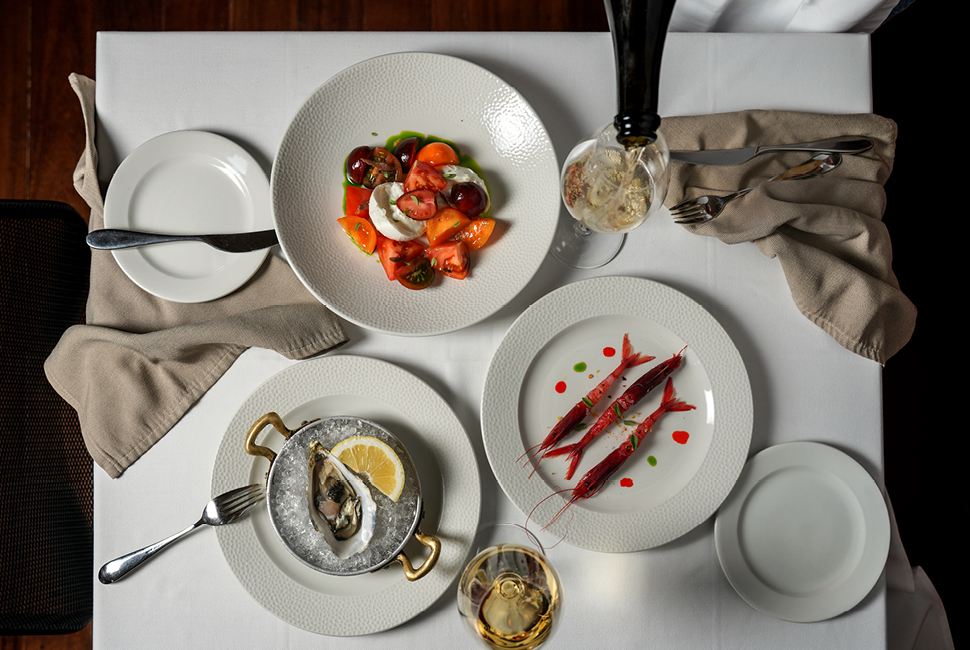
Day 2: Three Cities
The following day, return to the Upper Barrakka Gardens and take the Barrakka Lift down to the waterfront, where you can catch a 10-minute ferry ride across the Grand Harbour to the Three Cities for stunning views and a welcome breeze. As you approach the marina full of superyachts, hop off at Vittoriosa, the first fortified city built by the Knights Hospitaller in the 1500s.
“The Three Cities are the most underrated places to visit in Malta,” Oschetti says. “These cities have a significant historical background and offer a peaceful vantage point with stunning museums.”
While exploring the winding streets, make sure to visit the Inquisitor’s Palace. Built as a courthouse, the palace later became the headquarters of the Maltese Inquisition and housed many prisoners. Today, you can tour the restored building and peruse the Museum of Ethnography to learn more about the country’s culture and religion.
Then continue to St. Lawrence’s Church, a beautiful example of Roman-baroque style, and the nearby Malta Maritime Museum, chronicling the islands’ seafaring and naval history with fascinating exhibitions that showcase ancient Maltese boats, a massive collection of cannons and the world’s largest Roman anchor.
Another highlight in Vittoriosa is Fort St. Angelo at the tip of the peninsula — a historic military base that has long guarded the harbor. Within the fort, find a seat on the terrace at Terrone for lunch. This elegant waterfront restaurant specializes in ultra-fresh seafood and pasta dishes, like monkfish carpaccio, wood-grilled local blue mackerel and spaghetti with hand-dived sea urchin. And don’t forget the refreshing Maltese lemon tart for dessert.
Next, make your way through Cospicua — between Vittoriosa and Senglea — where you’ll have a chance to explore ancient cobbled streets and get a sense of local life, stopping to admire the Immaculate Conception Church and ogle at super yachts docked along the promenade.
As you head west, you’ll move into Senglea. Explore the laid-back area’s two beautiful churches, the Basilica of the Nativity of Mary and St. Philip’s Church, and the lovely waterfront Gardjola Gardens. Finish the day with dinner at The Little Bastion Restaurant, inside the Cugó Gran Macina Grand Harbour boutique hotel, for contemporary Mediterranean dishes, refreshing cocktails and spectacular harbor vistas.
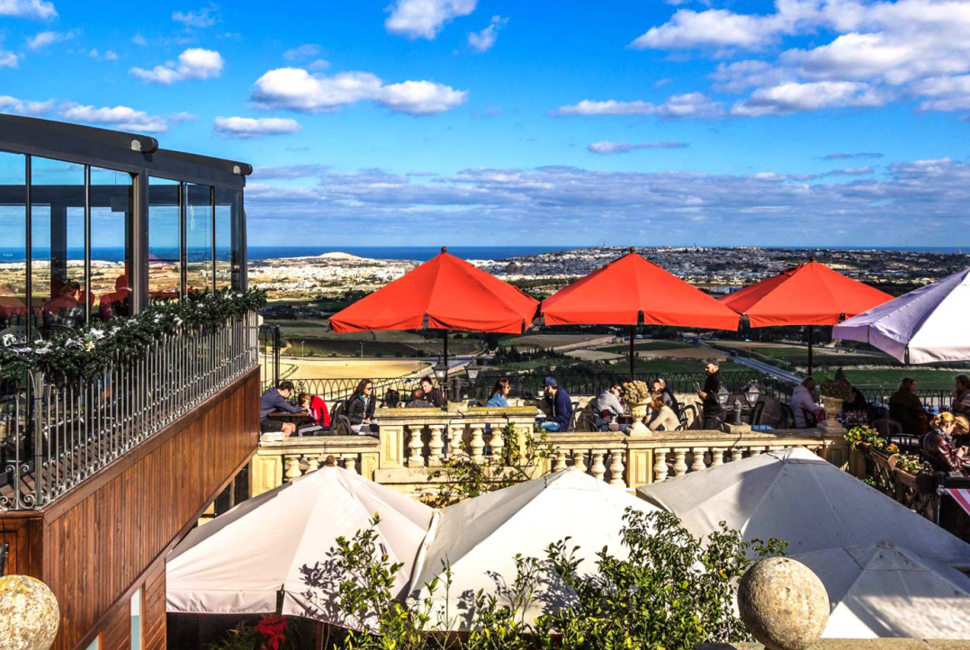
Day 3: Mdina, Hagar Qim and Mnajdra
One of the most atmospheric cities in Malta has to be Mdina, about 20 minutes west of Valletta by car. Nicknamed the “Silent City,” the ancient capital welcomes you with a medieval bridge, baroque city gates and towering limestone buildings covered in lush bougainvillea.
As you stroll the quiet, car-free streets, you will encounter landmarks like the Palazzo Falson Historic House Museum and St. Paul’s Cathedral, with its lavish baroque facade, breathtaking frescoes and stained-glass windows. Stop by Mdina Glass, a renowned local producer of handmade glassware, before you leave to snap up gorgeous vases, carafes, bowls, sculptures, jewelry and more.
“Mdina is worth the hype for its timeless beauty and well-preserved architecture,” Oschetti says. “The baroque city, with its imposing bastion walls, offers breathtaking views of the surrounding countryside. Visitors can also indulge in delicious treats at the famous Fontanella Tea Garden, known for its mouthwatering chocolate cake and stunning views from the bastion walls.”
After leaving the ancient capital behind, go west to the coast to visit the Dingli Cliffs for an unforgettable hike affording incredible vistas of the Mediterranean Sea and rugged coastline, followed by a visit to the nearby UNESCO-listed Hagar Qim and Mnajdra megalithic temples.
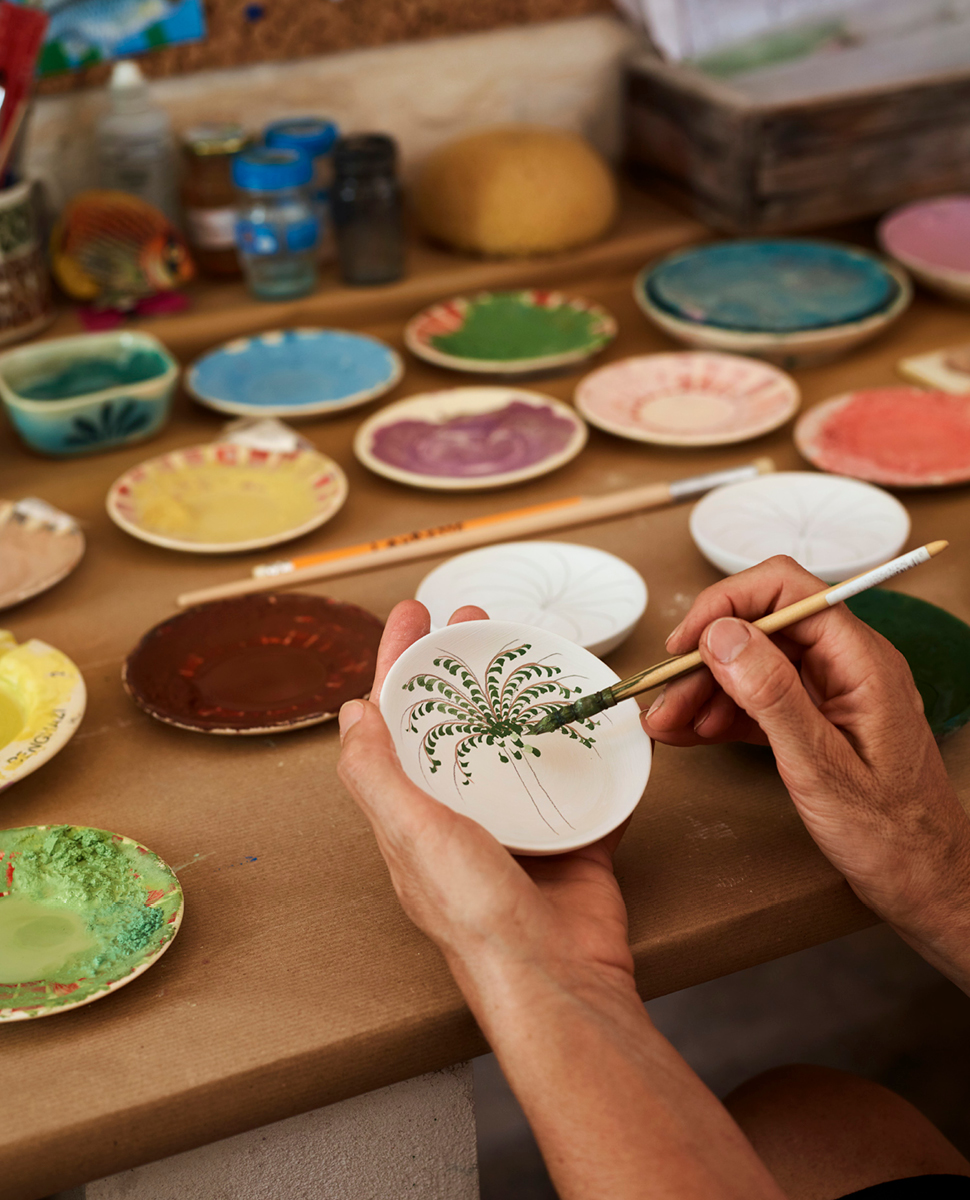
Thought to be built around 3,600 B.C., Hagar Qim features upright stones that form an entranceway, passages and interconnected chambers. Meanwhile, the Mnajdra temples were built more than a thousand years before the Great Pyramid of Giza in Egypt and are thought to be among the oldest free-standing structures in the world.
Driving north about 20 minutes, stop by the tranquil gardens of San Anton Palace, where the Maltese president resides, to relax by the fountains, ponds and meet a few peacocks before enjoying a casual lunch at Villa Bologna Restaurant. The charming family-run Italian eatery sits in a lush garden and connects to the Maltese ceramics boutique Villa Bologna Pottery if you’re looking for more souvenirs after lunch.
Spend the rest of the day enjoying a wine tasting at Marsovin, one of the most prestigious winemakers in the country. After a private tour of the 400-year-old cellar, you can sample the premium wines, many of which feature native grapes.
For dinner, head back to Valletta for a memorable last night in town at Legligin, a rustic restaurant specializing in Maltese and Mediterranean tasting menus with wine pairings. The menu changes daily based on what’s fresh at the market, but you can always look forward to delicious housemade bread, olive oil from Gozo Island and fresh seafood galore.
